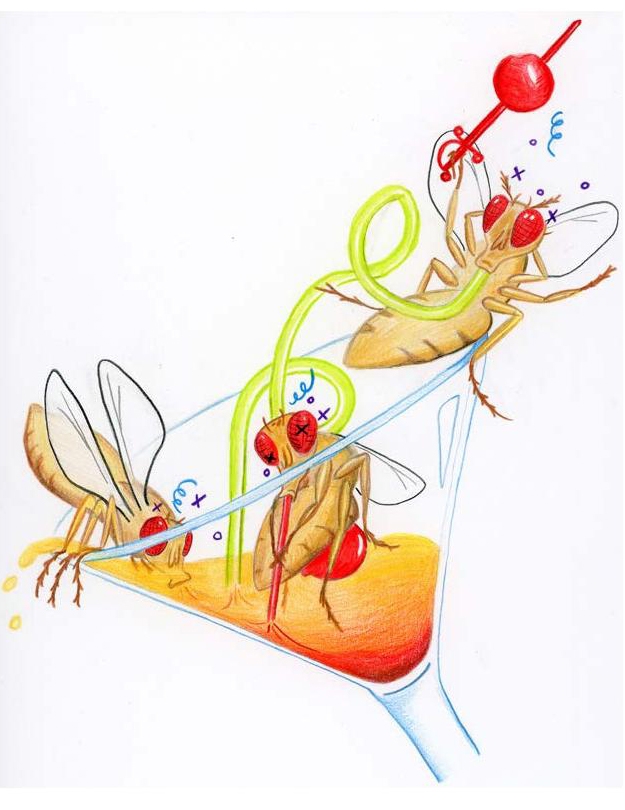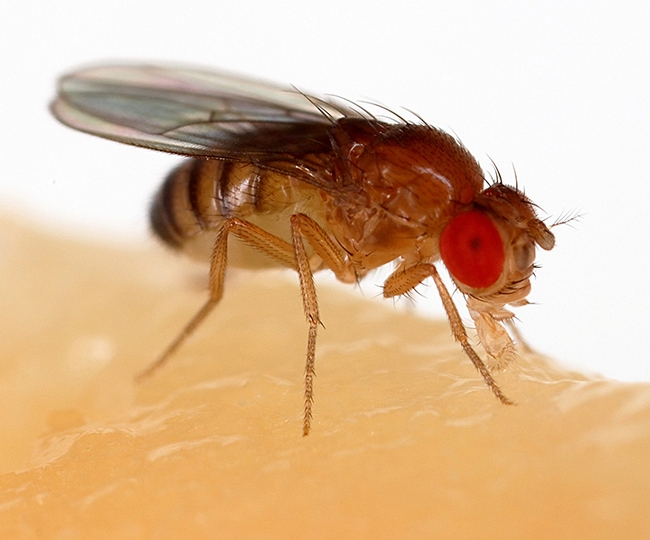
Those are some of the questions that Wolf asks. "We aim to find some of the molecular and neural circuit mechanisms that govern adult behavior in the fruit fly Drosophila."
Wolf, who holds a doctorate in molecular and cell biology from UC Berkeley, will speak on "Drinking Drosophila and Drunk Drosophila: Genes and Circuits for Simple Behaviors" at the next UC Davis Department of Entomology and Nematology seminar, set for 4:10 p.m., Wednesday, Oct. 31 in 122 Briggs Hall.
"How is motivation coded in a small brain?" Wolf asks. "How does a natural motivation like a thirst differ from drug-seeking in addiction? We use circuit mapping, genetics and behavior in Drosophila melanogaster to find out internal states combine with environmental information to select behavioral programs and suppress others."
Molecular geneticist Joanna Chiu, associate professor and vice chair of the UC Davis Department of Entomology and Nematology, will introduce the speaker and serve as the host. Medical entomologist Geoffrey Attardo coordinates the fall seminars.
The Drosophila fly nervous system is remarkable. Wolf says it's "a million-fold simpler than ours, yet flies are capable of carrying out remarkably sophisticated tasks that are modified by past experience and internal states. However, the biological bases for even simple behavioral actions that serve as models for more complex tasks remain mysterious. Understanding how circuits function in a model organism where rapid progress can be made with highly sophisticated tools is likely to provide insight into how more complicated brains work."
No wonder that Drosophila melanogaster, is a favorite model organism among biomedical researchers.
"There are many technical advantages of using Drosophila over vertebrate models; they are easy and inexpensive to culture in laboratory conditions, have a much shorter life cycle, they produce large numbers of externally laid embryos and they can be genetically modified in numerous ways," according to Barbara Jennings in ScienceDirect.com. "Research using Drosophila has made key advances in our understanding of regenerative biology and will no doubt contribute to the future of regenerative medicine in many different ways."
"Over the past four decades," Jennings points out, "Drosophila has become a predominant model used to understand how genes direct the development of an embryo from a single cell to a mature multicellular organism." Indeed, numerous scientists have won Nobel Prizes for their research on the fruit fly.
What does the scientific name, Drosophila melanogaster, mean? Drosophila means "dew lover" and melanogaster means "dark gut."
Attached Images:

